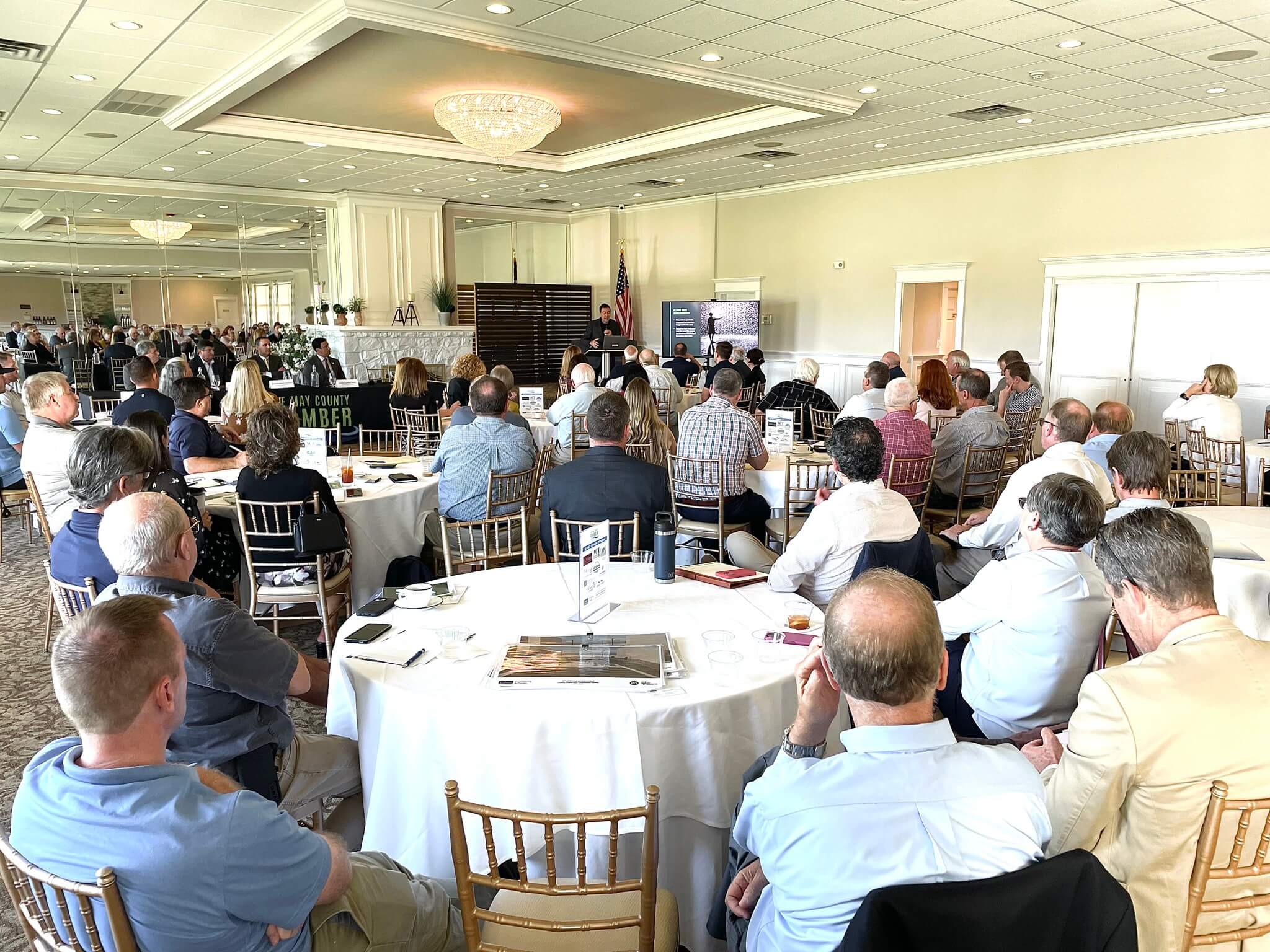BURLEIGH – The Cape May County Chamber of Commerce hosted a seminar designed to help residents and businesses understand new coastal zone management rules about to be released by the state Department of Environmental Protection.
The DEP’s presentation Thursday, Oct. 5, was given by Vincent Mazzei, New Jersey’s first state floodplain administrator. State Sens. Michael Testa (R-1st) and Vincent Polistina (R-2nd) also spoke during the seminar.
Mazzei began his presentation by going back to the state’s colonial days, when the settlement pattern was dictated by a need to stay close to waterways. He argued that this early development led to many of the state’s most populated areas being located in what we know today to be flood hazard areas.
He pointed to many older areas of development in the state that did not take flood hazards into account, leaving low-lying areas with population centers prone to flood risk.
Mazzei went on to argue that the very concept of risk needs to change dramatically in an era of climate change and rising sea levels. Risk, he said, has largely been calculated based on past experience. Even Federal Emergency Management Agency flood maps are based on 50-plus years of data on what happened in the past. Past data, he emphasized, are no longer a good predictor of future experience.
A major aspect of New Jersey’s plan for dealing with climate change requires an understanding of the future impacts of climate change, he said. Using a climate-adjusted view of coastal development is controversial since it requires some consensus on what the climate projections are and on what extrapolations serve as their foundation, he said.
A clear worry among some in the room, as articulated later by both Testa and Polistina, was that placing emphasis on too draconian a projection for the future climate can dramatically impact development opportunities, costs and land values.
Mazzei spoke of the DEP’s Resilient Environments and Landscapes rule-making program, which aims at the modernization of land use rules to respond to climate change. He said there are primary elements of the program that inform the new rule-making.
A major effort is the DEP’s adjusting of the coastal flood hazard area, a widening that will move the jurisdictional area farther inland from the coast. Another program goal is a perceived need to remedy FEMA concerns about New Jersey’s rules for National Flood Insurance Program policies.
These efforts by the DEP lead to rule-making that requires climate impact assessments, climate-adjusted flood elevations and defined inundation risk zones, Mazzei said. What it comes down to is a focus on development that is regulated based on climate projections, what might be called climate-adjusted development rules, he said.
Mazzei also spoke about the need to support renewables, a big part of which means support for the state’s offshore wind initiative. Permitting will also be impacted by the new rules, as permits by registration replace permits by rule.
Phase I of the new DEP rule-making focused on inland flooding and precipitation. DEP published the inland rules in December 2022. The Inland Flood Protection Rule contains new, increased base flood elevations and stormwater designs.
Phase II of the rule-making deals with coastal zone development. The sea level rise projections impacting the rule-making are from modeling done by Rutgers University, which opponents argue is now outdated and too severe.
This emphasis on sea level rise could, as Mazzei said, raise flood elevations 6 feet above FEMA’s 100-year flood levels. The New Jersey Builders Association projects dramatic impacts on present and planned housing development.
Mazzei’s presentation argues that DEP rule-making represents the state’s attempt to reflect the threats from the changing climate and to create a more resilient New Jersey.
Testa and Polistina had similar criticisms of the new rule-making. Both argued it was driven by Gov. Phil Murphy’s Executive Order 100 and is not the product of broad discussion or legislative involvement.
They also argued that the rule-making is based on worst-case scenarios for climate change without a full understanding of the economic consequences of the rules. They each predicted a lowering of home values, high costs for home development and an unnecessary burden on local economies.
They criticized the data being used to drive the rule-making, especially what Polistina called the “outdated” Rutgers study on sea level rise.
Contact the author, Vince Conti, at vconti@cmcherald.com.








